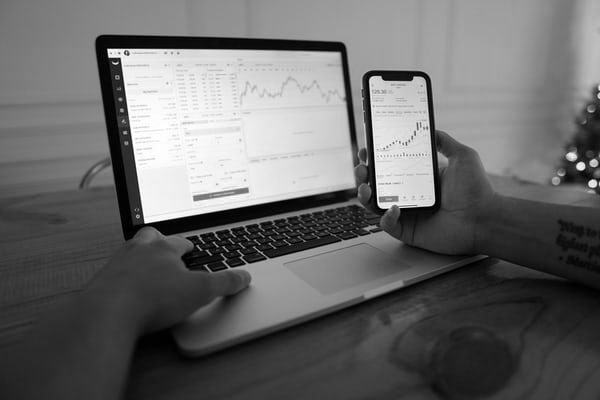Home › Market News › Taiwan Elections, the Global Economy, and a Crypto Head Fake

The Economic Calendar:
MONDAY: U.S. Holiday – Dr. Martin Luther King, Jr. Day
TUESDAY: Empire State Manufacturing Index (7:30a CST), Christopher Waller Speaks (10:00a CST)
WEDNESDAY: MBA Mortgage Applications (6:00a CST), Retail Sales (7:30a CST), Import & Export Prices (7:30a CST), Michael Barr Speaks (8:00a CST), Michelle Bowman Speaks (8:00a CST), Industrial Production (8:15a CST), Business Inventories (9:00a CST), Housing Market Index (9:00a CST), John Willimas Speaks (2:00p CST)
THURSDAY: Raphael Bostick Speaks (6:30a CST), Housing Starts & Permits (7:30a CST), Jobless Claims (7:30a CST), Philly Fed Manufacturing Index (7:30a CST), EIA Natural Gas Report (9:30a CST), EIA Petroleum Status Report (10:00a CST)
FRIDAY: Existing Home Sales (9:00a CST), Consumer Sentiment (9:00a CST), Baker Hughes Rig Count (12:00p CST), Michael Barr Speaks (12:00p CST)
Key Events:
February futures are +41% in a month.
Weather forecasts keep getting colder. The nat gas report for Jan.19 is now forecast to show the largest inventory draw in 3 years.
The following week also predicts cold temperatures—the current futures price curve bottoms in April at $2.34. NG bottomed last April at 2.00, but it could easily go there again. That’s an 8% downside. Or it could easily go to $4.00 with some cold weather. That’s 70% upside.
When prices are this low in NG, traders should change their primary mental model from the odds of the next move’s direction to the potential sizes of the moves. That’s because the payoff asymmetry is now enormous.
The market bulls survived last week’s CPI and PPI release and financial sector corporate earnings.
Heading into the Q4 earnings season, consensus EPS estimates have been cut by 6% since September vs. a typical 4% reduction in estimates. However, earnings breadth, which is the total number of companies with positive EPS growth, is expected to improve for the third straight quarter.
The macro picture is a lot more troubling now than it was 12 months ago, and the year-end rally we saw in December likely pulled some potential gains from 2024 into 2023.
Going into 2024, the predominant view still leans bearish, as reflected by net futures positioning data on the S&P 500 that shows 65% of futures contracts are negative or short. However, negative positioning does not always translate to downside price action.
Taiwan goes to the polls over the weekend. If the winner is Lai Ching-te from the pro-sovereignty Democratic Progressive Party, there will be some kind of response from mainland China.
Looking at the worst case, this could turn into a military conflict between the U.S. and China.
Some analysts warn the Magnificent Seven tech stocks could be at risk. They’re in an extremely strong competitive position, but that doesn’t protect them from the possible consequences of the Taiwan election.
Despite the U.S. running strong and major economies quelling inflation without sending the world into a recession, World Bank Chief Economist Indermit S. Gill claims the big-picture outlook remains “dismal.”
He projects that global GDP will expand at a sluggish 2.4% this year, below last year’s 2.6% and the 2010s annual average of 3.1%.
Sky-high borrowing costs and slowing global trade growth will constrain economic progress in low-income countries. The World Bank expects that anemic growth means that the UN’s goals of eradicating extreme poverty and slashing greenhouse gas emissions by almost half ahead of 2030 will likely go the way of most New Year’s resolutions.
It also predicts that by the end of 2024, 1-in-4 people in low-income countries will still be poorer than they were pre-pandemic.
It was a wild week in crypto volatility. It started on Tuesday when the SEC’s X account posted that the BTC spot ETFs had been given the green light, only for Chairman Gary Gensler to announce minutes later that the account was hacked.
On the hack, BTC rallied to just under $48,000. Once Gensler had corrected the SEC-compromised account, BTC saw its price fall to $44,500.
Then, late in Wednesday’s trading day, the SEC announced the approval of multiple BTC spot ETFs. The price drifted higher to $46500 and then closed the week lower to $42500.
The trading volume in the new ETFs was robust and encouraged acceptance of the new product.
